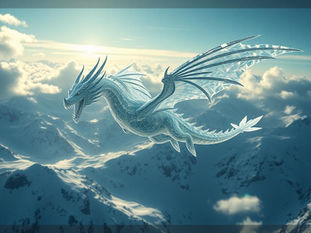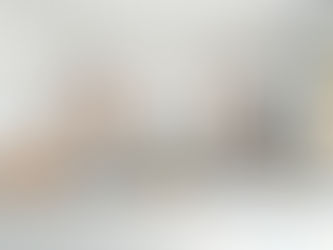
Transform Your Photos: A Simple Guide to Midjourney's New Editor and Retexture Features
Apr 30
6 min read
0
69
0

Midjourney has released a powerful new image editor. For the first time, you can upload and change your own external images. This editor includes familiar features like repainting and resizing. It also adds an exciting new retexture feature. This lets you change the style of your images while keeping the main structure. Let's look at how it works and what you can create.
Meet Midjourney's New Image Editor
The new editor is on the Midjourney website. It gives you more control over your images. You can edit images you made with Midjourney, but the big news is editing photos or designs from outside Midjourney.
Who Can Access the New Editor?
Right now, access is limited. Midjourney says it's available to users who have:
Generated at least 10,000 images.
Have a yearly membership.
Have been monthly subscribers for 12 months in a row.
This limited release helps the team test a new system for checking images. If you have access, you'll see an "Edit" button on the left side of the website.
Getting Started: The Edit Tab
The "Edit" tab is where you bring in your images. You can click "Edit from URL" and paste an image web address. Or, you can just click or drag your image file directly into the editor.
Keep in mind, you can edit images you already made with Midjourney in this new editor too. We'll talk about the difference between this and the older editor later.
Using Basic Editing Tools
If you've used the basic Midjourney editor before, the tools here will look familiar. You can:
Erase parts of an image.
Move the image on the canvas.
Resize the image.
Change the aspect ratio (the shape of the image).
The erase tool is active by default. You can use a slider to change the brush size. For example, you can erase the sky above someone's head to add a hat.
Tips for Prompting Edits
After erasing an area, you tell Midjourney what to put there using a prompt. It helps to add context. Instead of just typing "yellow hat", you might type "photo of a man in a coffee shop wearing a yellow hat". Midjourney uses this prompt to fill the empty space.
Before you submit your edit job, double-check your settings. Make sure you are using the latest Midjourney model version, like 6.1. You can set it as your default or add [--v 6.1] to your prompt.
Working with Your Results
Your editing results appear in a panel on the right. You'll see your original image and then different versions based on your prompt. Clicking on a result lets you edit it further, making it easy to try different ideas.
Images you create in this new editor do not automatically show up in your main "Organized" gallery page. To save an image to your main gallery, click "Upscale to Gallery". This does a small upscale and adds it there.
All results from this new editor go into a separate "Image Editor Gallery". You can see it by clicking "View All". This gallery has filtering options similar to your main gallery, but the images are separate. You can download single images or select multiple by clicking and dragging or using shift-click.
Exploring Creative Uses: Product Mockups
The edit tab is great for creative projects like product mockups. You can upload PNG files that have clear backgrounds. This lets you place designs onto photos of shirts, mugs, or notebooks.
Upload a PNG of a design on a shirt. Resize and place it. Then, add a prompt like "photo of a woman standing in bright sunlight". Mildjourney will create versions integrating your design into different scenes. You can even erase and replace the person's face, maybe using a character reference image if you want specific features.
Be cautious with complex shapes like mugs; Midjourney might get confused about how the object should blend into the scene. But for many items, this works very well.
Editing images can use lots of trial and error. To streamline your creative process, consider using the Midjourney Automation Suite from TitanXT. It can help manage your workflow and generate variations more efficiently.
Step Up Your Style with Retexture
Retexture is a favorite new feature. Go to the "Retexture" tab and upload an image (or use one you just made). Retexture works like a style filter. It changes the look of the image, but it tries to keep the original image's main structure and shapes.
How Retexture Works
Unlike the edit tab, retexture doesn't have buttons for erasing or moving. It uses your text prompt to guide the style change. For example, if you upload a photo of a cow and type "pencil sketch drawing of a cow", Midjourney will create variations that look like sketches. The cow's shape and position stay the same, but the details change to match the sketch style.
Retexture Examples
You can try many different styles:
Turn a photo into a "3D render".
Make an image look like a "watercolor painting".
Explore various artistic styles with simple prompts.
You can click on any of these results and go back to the "Edit" tab to make further changes if you want to build on a retextured image.
Combining Retexture with Style References
If you use style reference codes (sref codes) in your prompts, you'll love retexture. The results can be quite impactful. Upload an image, use a simple prompt describing the subject, and add an sref code. Midjourney will apply that style to your image while keeping the original subject and layout.
Retexture for Design and Ideas
Retexture is great for visualizing design changes. Upload a photo of your living room. Use prompts like "bright modern living room" or include specific colors ("living room with blue and gold decor"). Midjourney keeps the room layout but changes the style elements.
You can do this for building exteriors too. Explore different siding textures, stone work, or color palettes using prompts. For bigger changes, like landscaping, you could use the "Edit" tab first to erase the lawn, then use a prompt to add new elements.
Working with People and Character Consistency
Retexture can also change the lighting or atmosphere of a scene with a person in it. However, details like hair and faces might change because retexture creates new images. If you want to keep a specific person's features more consistent, try using the input image as a character reference. Drag your image into the prompt bar and click the character icon. Running retexture again with the character reference might help keep features more similar.
Using image references at the start of your prompt helps with poses. With the new editor, you could upload a photo just for the pose, then use "Edit" and "Retexture" to swap the face (using character reference) and change clothing or style. Getting a perfect result might take work, but it's a possible way to use the tools.
Bring Sketches to Life
Do you have drawings or sketches? Upload them to the new editor! Use retexture with different prompts or sref codes to see them transformed into various finished art styles. Midjourney might not capture every tiny detail from complex drawings, but it holds onto the main structure. This is a fun way to explore how your sketches could look as final images.
Exploring all these options manually can be time-consuming. Enhance your creative workflow and speed up your iterations with the powerful Midjourney Automation Suite from TitanXT.
New Editor vs. Basic Editor: What's the Difference?
Midjourney now has two editors, which can be confusing. Here is a simple breakdown:
[B]Basic Editor (Older):[/B] Accessible to everyone. Can only edit images generated by Midjourney. Results go to your main "Organized" gallery page.
[B]New Editor (Full Editor):[/B] Limited access for now. Lets you upload external images. Has the retexture feature. Results go to a separate "Image Editor Gallery". You need to click "Upscale to Gallery" to send images to your main "Organized" page.
If you have access to the new editor, you'll see an "Open in Full Editor" button when viewing an image in the basic editor. This moves the image to the new editor, giving you access to all its tools, including retexture.
Final Thoughts
Midjourney's new image editor opens up many possibilities. Being able to upload and edit outside images changes how you can use Midjourney. The retexture feature is a creative tool for changing styles while keeping your image's core look. It works especially well with simpler scenes and experimenting with prompts or style references. Try uploading your photos, designs, or even sketches and see what you can create!
Ready to take your Midjourney work to the next level? Discover how the features discussed here can be part of a more efficient workflow with the Midjourney Automation Suite from TitanXT. It's designed to help you manage and generate images more effectively.






